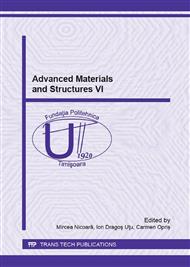[1]
B. Han, M. Zhang, C. Qi, N. Cui, Y. Wang, Characterization and friction-reduction performances of composite coating produced by laser cladding and ion sulfurizing, Mater. Lett. 150 (2015) 35–38.
DOI: 10.1016/j.matlet.2015.02.098
Google Scholar
[2]
P. Zhang, Z. Liu, Effect of sequential turning and burnishing on the surface integrity of Cr–Ni-based stainless steel formed by laser cladding process, Surf. Coat. Technol. 276 (2015) 327–335.
DOI: 10.1016/j.surfcoat.2015.07.026
Google Scholar
[3]
H. Guo,Q. Wang,W. Wang, J. Guo,Q. Liu, M. Zhu, Investigation on wear and damage performance of laser cladding Co-based alloy on single wheel or rail material, Wear 328-329 (2015) 329–337.
DOI: 10.1016/j.wear.2015.03.002
Google Scholar
[4]
J.L. Chen, J. Li, R. Song, L. L. Bai, J. Z. Shao, C. C. Qu, Effect of the scanning speed on microstructural evolution and wear behaviors of laser cladding NiCrBSi composite coatings, Opt. Laser Technol. 72 (2015) 86–99.
DOI: 10.1016/j.optlastec.2015.03.015
Google Scholar
[5]
S. Liu, X. Zheng, G. Geng, Dry sliding wear behavior and corrosion resistance of NiCrBSi coating deposited by activated combustion-high velocity air fuel spray process, Mater. Des. 31 (2010) 913–917.
DOI: 10.1016/j.matdes.2009.07.034
Google Scholar
[6]
P. Niranatlumpong, H. Koiprasert, Phase transformation of NiCrBSi–WC and NiBSi–WC arc sprayed coatings, Surf. Coat. Technol. 206 (2011) 440–445.
DOI: 10.1016/j.surfcoat.2011.07.057
Google Scholar
[7]
X. Luo, J. Li, G.J. Li, Effect of NiCrBSi content on microstructural evolution, cracking susceptibility and wear behaviors of laser cladding WC/Ni–NiCrBSi composite coatings, J. Alloys Compd. 626 (2015) 102–111.
DOI: 10.1016/j.jallcom.2014.11.161
Google Scholar
[8]
Z. J. Jing, H. Zhou, P. Zhang, C. W. Wang, C. Meng, D. L. Cong, Effect of thermal fatigue on the wear resistance of grafite cast iron bionic unutis produced by laser cladding WC, Appl. Surf. Sci. 271 (2013) pp.329-336.
DOI: 10.1016/j.apsusc.2013.01.193
Google Scholar
[9]
Z. K. Fu, H. H. Ding, W. J. Wang, Q. Y. Liu, J. Guo, M. H. Zhu, Investigation on microstructure and wear characteristics of laser cladding Fe-based alloys on wheel/rail materials, Wear 330-331 (2015) pp.592-599.
DOI: 10.1016/j.wear.2015.02.053
Google Scholar


